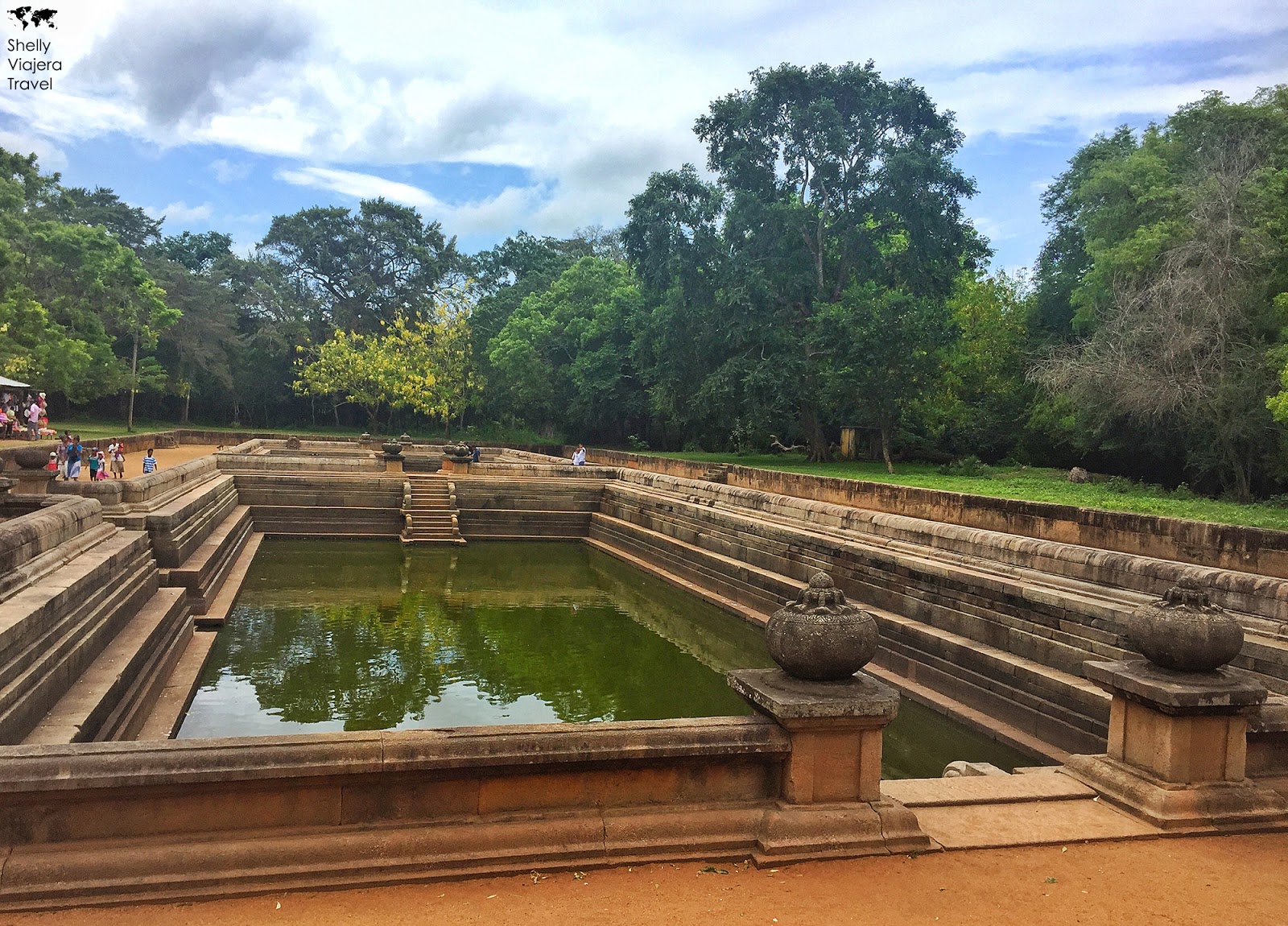Kuttam Pokuna
Located in a wide garden in Anuradhapura, the Kuttam Pokuna were once bathing tanks or pools that consist of 2 ponds. The bigger pond has a dimension of 132 x 511 feet, while the smaller is 91 x 51 feet.These ponds show such early expertise in hydro engineering by Sri Lankans. It's also noticeable that the architecture and design are detailed. This includes staircases with artistic carvings that wholly make the pond look sophisticated.
Jetavanaramaya
The Jetavanaramaya is a Buddhist stupa standing at 400 feet, which makes it the tallest stupa in the world. For its size and shape, this stupa displays such engineering ingenuity, considering that it was constructed during the early times. It’s also all made up of baked bricks that give its brownish color while the gaps between bricks are covered by earth and stones. As said, it took 15 years for the construction to finish.This stupa represents the Buddhist monks of the Theravada and Mahayana sects. Buddhists and locals come to this stupa to pay their respect.
Note: When visiting religious sites (like stupas) in Sri Lanka, footwear and hat must be removed before entering. Also, the knees and shoulders should not be exposed. Thus, it's best to plan your outfit when going to these places. Following these is a sign of respect to their religion and culture.
Ruwanwelisaya
The Ruwanwelisaya is another gigantic structure in Anuradhapura that stands 338 feet. Unlike Jetavanaramaya though, this stupa has a distinctive whitish color.It was built by King Dutugemunu in 140 BC, the Sri Lankan king who brought stabilization and unity throughout the country.
Jaya Sri Maha Bodhi
The Jaya Sri Maha Bodhi is a sacred fig tree and is one of the oldest trees in the world that was planted by a human. In 236 BC, Buddhist nun Sanghamitta Maha Theri was sent by Emperor Asoka to Sri Lanka. She carried a southern branch of the sacred Sri Maha Bodhi from India, the tree where Buddha was said to attain enlightenment. Years later, King Devanampiya Tissa planted this southern branch in Anuradhapura, which is now the Jaya Sri Maha Bodhi.This tree is exactly located in Mahamewna Gardens, which is not too far from the Ruwanwelisaya.
Abhayagiri Dagoba
The Abhayagiri Dagoba is the second largest stupa next to Jetavanaramaya. Similar to other stupas, it’s also considered sacred and visited by a lot of pilgrims.It’s part of the complex of Abhayagiri Vihāra, a major monastery site of Theravada and Mahayana Buddhism. It was founded by King Valagamba in 103 BC which then taken over by Mahathissa Thera.
Sandakada pahana
What’s treated as uniquely Sinhalese is this sandakada pahana, which means “moonstone” in English. It’s a carving on semi-circular stone slab, commonly seen at the foot of staircases or at entrance doors. The design signifies the endless cycle of birth, death, and then rebirth. This is called “samsara,” the circle of of transmigration.How to get there
Anuradhapura is around 200 km away from Colombo, the capital of Sri Lanka. It usually takes 4-5 hour travel time by car. For a more adventurous ride though, I can recommended riding a local train. This mode of transportation tends to be slower, but nothing beats traveling like a local.The Colombo-Anuradhapura train schedule is only once a day (departs at 5:30AM). The train station is located at Colombo Fort. It's best to buy the ticket in advance. The train fare is as follows:
3rd class: LKR 160
2nd class: LKR 290
1st class (air-conditioned): LKR 520
Entrance fee
In the effort to preserve Anuradhapura, tourists are required to pay a (quite-hefty) entrance fee of USD 20 / LKR 3975. It's valid for a day and covers entrances to all of its historical sites. Payment is cash only (in US dollars or Sri Lankan rupees).Note: Pay at the right place to be sure the money goes to the right cause. There were stories of tourists being offered with a "cheaper" tuktuk package tour, but it seems the money goes only to personal pockets.
When in Sri Lanka: Anuradhapura
 Reviewed by Shelly Viajera Travel
on
9.1.19
Rating:
Reviewed by Shelly Viajera Travel
on
9.1.19
Rating:
 Reviewed by Shelly Viajera Travel
on
9.1.19
Rating:
Reviewed by Shelly Viajera Travel
on
9.1.19
Rating:






















No comments:
I want to hear from you! Please leave your comment! (: